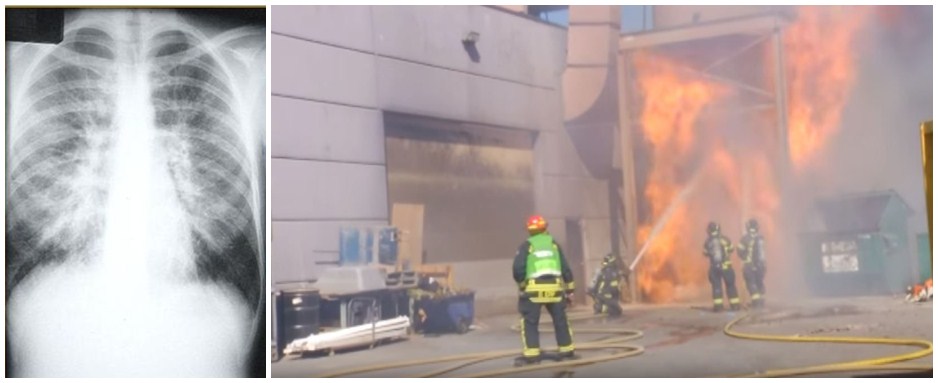Safety risks
Wood dust not only can cause serious health problems, but also for its flammable and, in certain situations, can cause a fire or explosion. Every year, premises are severely damaged or destroyed by wood dust fires that usually start in dust extraction equipment. Wood dust explosions in buildings are rare, except in the chipboard industry. It also makes sense to control wood dust from a business point of view as you will need less time for clearing up, and there will be fewer slips and trips hazards caused by settled dust
What causes high wood dust exposures ?
The following activities are likely to produce high dust exposures, some over long periods:
–machining operations, particularly sawing, routing and turning;
–sanding, by machine and by hand;
–using compressed airlines to blow dust off furniture and other articles (to be avoided) before spraying;
–hand assembly of machined or sanded components;
–operations involving processing composite boards, eg medium-density fibreboard (MDF);
–the bagging of dust from dust extraction systems;
–housekeeping, especially if sweeping up and using
–compressed airlines (again to be avoided).
Types of wood dust
In addition to the tiny particles of wood produced
during processing, wood dust can also contain
bacteria and fungal and moss spores. The quantity
and type of wood dust will depend on the wood being
cut and the machine you are using, for example:
–whether the timber is green or seasoned;
–whether it is a hardwood, softwood or composite board;
–how aggressive the machine cutter or blade profile is.
–The biggest risk is from fine dust, as you can breathe
this deep into your lungs where it will do the most
damage. Fine dust will also spread further from the
cutting process so it is important to clean ledges and
other workroom surfaces regularly to prevent dust accumulating
What you need to do ?
Exposure limits
Both hardwood and softwood dusts have a Workplace Exposure Limit (WEL) of 5mg/m3 which must not be exceeded. These are limits placed on the amount of dust in the air, averaged over an eight-hour working day. However, you must reduce exposure to wood dust to as low as ‘reasonably practicable’.
Extraction
Provide dust extraction at woodworking machines (bag dust extractors which is convenient and can fit different kinds of machines , or you could set dust central dust collecting system) to capture and remove dust before it can spread.
Educate workers about the risks from wood dust and the control measures required. They should know how to use the extraction properly. For very dusty jobs such as sanding, additional protection may be needed and a suitable face mask should be worn as well as using the extraction.
Health surveillance
Because wood dust causes asthma any health effects must be picked up early. This can be done using healthe suveillance .
For most woods, low level health surveillance will do. When someone first starts in a job where they are exposed to wood dust they should fill in a questionnaire,
After six weeks they should then complete a follow up questionnaire and this should then be repeated every year including lung function testing.
Post time: Jul-03-2017



